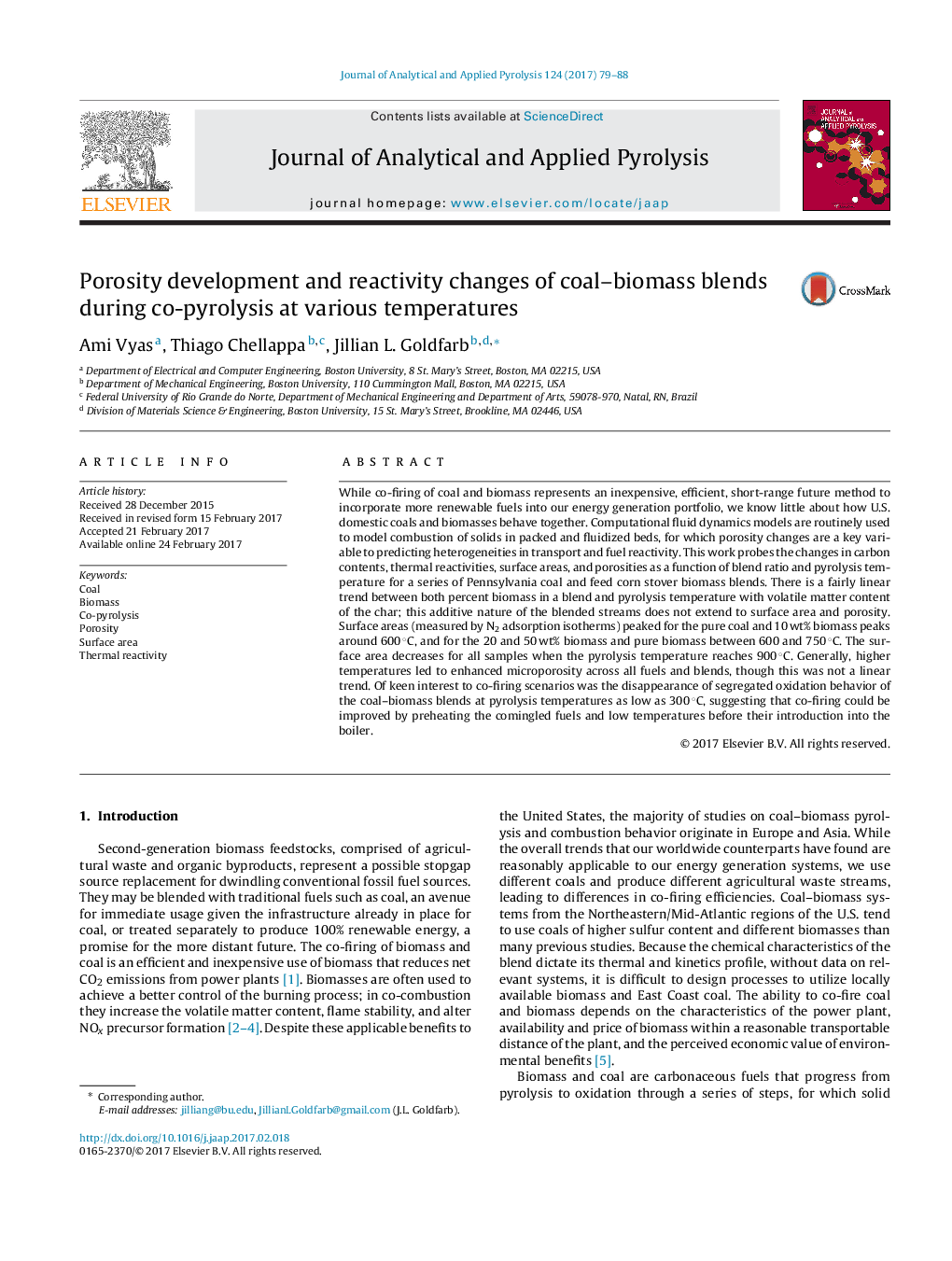| Article ID | Journal | Published Year | Pages | File Type |
|---|---|---|---|---|
| 5134573 | Journal of Analytical and Applied Pyrolysis | 2017 | 10 Pages |
•Porosity of pyrolyzed coal–biomass blends not additive function of composition.•Reactivity of pyrolyzed blends decreases with increasing coal, pyrolysis temperature.•Fuel segregation of coal–biomass blends disappears when co-pyrolyzed at 300 °C.
While co-firing of coal and biomass represents an inexpensive, efficient, short-range future method to incorporate more renewable fuels into our energy generation portfolio, we know little about how U.S. domestic coals and biomasses behave together. Computational fluid dynamics models are routinely used to model combustion of solids in packed and fluidized beds, for which porosity changes are a key variable to predicting heterogeneities in transport and fuel reactivity. This work probes the changes in carbon contents, thermal reactivities, surface areas, and porosities as a function of blend ratio and pyrolysis temperature for a series of Pennsylvania coal and feed corn stover biomass blends. There is a fairly linear trend between both percent biomass in a blend and pyrolysis temperature with volatile matter content of the char; this additive nature of the blended streams does not extend to surface area and porosity. Surface areas (measured by N2 adsorption isotherms) peaked for the pure coal and 10 wt% biomass peaks around 600 °C, and for the 20 and 50 wt% biomass and pure biomass between 600 and 750 °C. The surface area decreases for all samples when the pyrolysis temperature reaches 900 °C. Generally, higher temperatures led to enhanced microporosity across all fuels and blends, though this was not a linear trend. Of keen interest to co-firing scenarios was the disappearance of segregated oxidation behavior of the coal–biomass blends at pyrolysis temperatures as low as 300 °C, suggesting that co-firing could be improved by preheating the comingled fuels and low temperatures before their introduction into the boiler.
